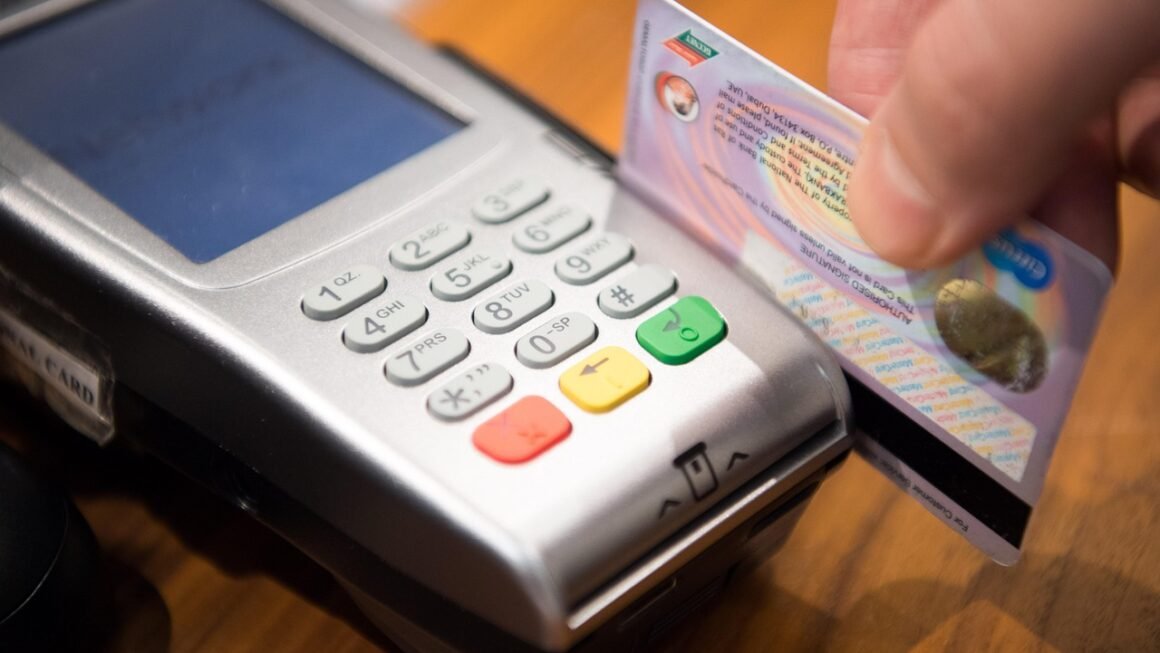Navigating the world of online business can feel like traversing a complex maze, and at the heart of it all lies the critical function of processing payments. Whether you’re selling handcrafted jewelry or providing subscription-based services, a reliable payment gateway is the linchpin connecting your business to your customers’ wallets. Understanding what these gateways are, how they function, and which options are best suited for your specific needs is essential for sustainable growth and a positive customer experience.
What is a Payment Gateway?
A payment gateway is a technology that facilitates the transfer of funds from a customer’s bank account or credit card to a merchant’s bank account. Think of it as the digital equivalent of a point-of-sale (POS) system in a brick-and-mortar store. It securely transmits payment information between the customer, the merchant, and the payment processor. Without a payment gateway, accepting online payments would be nearly impossible.
How Payment Gateways Work
The payment process involves several key steps:
- Customer Initiates Purchase: The customer enters their payment details (credit card number, expiry date, CVV) on your website or app.
- Secure Transmission: The payment gateway encrypts the sensitive payment information and securely transmits it to the payment processor. Encryption is crucial to protect against fraud and data breaches.
- Payment Processor Authorization: The payment processor verifies the customer’s information with the issuing bank and checks for sufficient funds or credit.
- Approval or Denial: The bank sends an authorization code back to the payment processor, which then relays the approval or denial message to the payment gateway.
- Transaction Completion: The payment gateway forwards the response to the merchant’s website or app, completing the transaction. The customer receives confirmation, and the merchant receives the funds (minus any fees).
Key Features to Look For
When choosing a payment gateway, consider these important features:
- Security: PCI DSS compliance is paramount. Look for gateways with robust encryption and fraud prevention tools.
Example: Tokenization, which replaces sensitive card data with a non-sensitive equivalent (a token), is a valuable security feature.
- Payment Options: Does the gateway support the payment methods your customers prefer? This could include credit cards, debit cards, digital wallets (like Apple Pay, Google Pay, and PayPal), and even local payment methods.
- Integration: How easily does the gateway integrate with your existing e-commerce platform or website? Most platforms offer pre-built integrations for popular gateways.
Example: If you’re using Shopify, you can easily integrate with Shopify Payments or third-party gateways like Stripe or Authorize.net.
- Pricing: Understand the fees associated with the gateway, including transaction fees, monthly fees, setup fees, and chargeback fees.
- Customer Support: Is reliable customer support available in case you encounter issues? Look for gateways with responsive support channels, such as phone, email, or live chat.
- Reporting and Analytics: Does the gateway offer reporting and analytics tools that allow you to track sales, identify trends, and manage risk?
Types of Payment Gateways
Payment gateways come in various forms, each with its own set of characteristics and benefits. Understanding the different types can help you choose the one that best aligns with your business model and technical capabilities.
Hosted Payment Gateways
With a hosted payment gateway, customers are redirected from your website to the gateway’s secure server to enter their payment information. After the transaction is complete, they are redirected back to your website.
- Example: PayPal is a popular hosted payment gateway. When a customer chooses to pay with PayPal, they are redirected to the PayPal website to log in and authorize the payment.
- Benefits: Easier setup, lower security burden (as the gateway handles the security of payment data), and often a lower initial cost.
- Drawbacks: Can disrupt the customer experience by taking them away from your website, and may offer less customization.
Integrated Payment Gateways
Integrated payment gateways allow customers to enter their payment information directly on your website, without being redirected to a third-party site. The gateway handles the payment processing in the background.
- Example: Stripe and Authorize.net are examples of integrated payment gateways. They provide APIs and SDKs that allow you to build a seamless payment experience directly into your website or app.
- Benefits: More control over the customer experience, greater customization options, and a more professional look and feel.
- Drawbacks: Requires more technical expertise to set up and maintain, and places a greater security burden on the merchant (requiring PCI DSS compliance).
Self-Hosted Payment Gateways
Self-hosted payment gateways collect payment information on your website but then send it directly to the payment processor without going through a third-party gateway’s servers.
- Benefits: Offers maximum control over the payment process.
- Drawbacks: Requires the highest level of security and PCI DSS compliance, significant technical expertise, and can be expensive to set up and maintain. Typically only used by very large businesses.
Choosing the Right Payment Gateway
Selecting the right payment gateway is a critical decision that can significantly impact your business’s success. Here’s a structured approach to help you make an informed choice:
Assess Your Business Needs
- Transaction Volume: Estimate your average monthly transaction volume. Some gateways offer discounted rates for higher volumes.
- Average Transaction Size: Consider the average value of each transaction. This can influence the pricing structure that is most advantageous for you.
- Payment Methods: Identify the payment methods you need to support based on your target audience.
- E-commerce Platform: Ensure the gateway is compatible with your e-commerce platform or website builder.
- Technical Expertise: Evaluate your technical capabilities and resources. If you lack technical expertise, a hosted gateway may be a better option.
- Security Requirements: Determine the level of security you need based on the type of data you handle and your risk tolerance.
Compare Gateway Options
- Research different gateways: Read reviews, compare features, and evaluate pricing.
- Request quotes: Contact multiple gateways to get quotes based on your specific business needs.
- Consider the long-term costs: Factor in all fees, including transaction fees, monthly fees, setup fees, and chargeback fees.
Test the Gateway
- Use a sandbox environment: Most gateways offer a sandbox environment that allows you to test the integration without processing real transactions.
- Conduct thorough testing: Test all payment methods, error handling, and reporting features.
- Monitor performance: Track transaction success rates and identify any potential issues.
Example Scenario
Let’s say you’re starting a small online store selling handmade crafts. You’re using Shopify as your e-commerce platform and expect to process around 100 transactions per month with an average transaction size of $50.
In this case, Shopify Payments or Stripe might be good options due to their seamless integration with Shopify, competitive pricing, and robust security features. You could also consider PayPal as an additional payment option to cater to customers who prefer to pay with PayPal.
Security and Compliance
Security is paramount when it comes to payment gateways. A data breach can damage your reputation, lead to financial losses, and erode customer trust.
PCI DSS Compliance
PCI DSS (Payment Card Industry Data Security Standard) is a set of security standards designed to protect cardholder data. Compliance with PCI DSS is essential for any merchant that accepts credit card payments.
- Levels of Compliance: There are four levels of PCI DSS compliance, based on the number of transactions processed annually.
- Requirements: PCI DSS requirements include implementing a firewall, encrypting cardholder data, regularly updating antivirus software, and restricting access to cardholder data.
Fraud Prevention Tools
Payment gateways often offer fraud prevention tools to help merchants detect and prevent fraudulent transactions.
- Address Verification System (AVS): AVS compares the billing address provided by the customer with the address on file with the credit card issuer.
- Card Verification Value (CVV): CVV is a three- or four-digit security code printed on the back of credit cards.
- 3D Secure: 3D Secure (e.g., Verified by Visa, Mastercard SecureCode) adds an extra layer of authentication by requiring customers to enter a password or security code during the transaction.
- Fraud Scoring: Gateways use algorithms to assign a risk score to each transaction based on various factors, such as IP address, location, and transaction amount.
Best Practices for Security
- Use a strong password: Choose a strong password for your payment gateway account and change it regularly.
- Enable two-factor authentication: Two-factor authentication adds an extra layer of security by requiring a second verification factor, such as a code sent to your phone.
- Keep your software up to date: Regularly update your e-commerce platform, payment gateway software, and other security software to patch vulnerabilities.
- Monitor transactions for suspicious activity: Regularly review your transaction logs and look for any signs of fraud.
- Educate your employees: Train your employees on security best practices and how to identify and prevent fraud.
Future Trends in Payment Gateways
The payment landscape is constantly evolving, with new technologies and trends emerging all the time. Staying informed about these trends can help you stay ahead of the curve and provide your customers with the best possible payment experience.
Mobile Payments
Mobile payments are becoming increasingly popular, as more and more consumers use their smartphones to make purchases.
- Digital Wallets: Digital wallets like Apple Pay, Google Pay, and Samsung Pay allow customers to make payments using their smartphones or other mobile devices.
- Mobile POS Systems: Mobile POS (mPOS) systems allow merchants to accept payments on the go using a smartphone or tablet.
Buy Now, Pay Later (BNPL)
Buy Now, Pay Later (BNPL) services allow customers to split their purchases into installments, making it easier for them to afford larger purchases.
- Popular BNPL Providers: Affirm, Klarna, and Afterpay are popular BNPL providers.
- Benefits for Merchants: BNPL can increase sales and conversion rates by making products more accessible to customers.
Cryptocurrency Payments
Cryptocurrency payments are becoming increasingly accepted by merchants, as more and more consumers adopt cryptocurrencies.
- Cryptocurrency Gateways: Cryptocurrency gateways allow merchants to accept payments in cryptocurrencies like Bitcoin, Ethereum, and Litecoin.
- Benefits for Merchants: Cryptocurrency payments can reduce transaction fees, increase security, and reach a new customer base.
Conclusion
Choosing the right payment gateway is a vital decision for any business operating online. By understanding the different types of gateways, assessing your business needs, and prioritizing security, you can select a payment gateway that meets your requirements and helps you achieve your business goals. Keep abreast of emerging trends in the payment landscape to ensure you’re offering your customers the most convenient and secure payment options available. A well-chosen payment gateway can streamline your operations, enhance customer satisfaction, and ultimately contribute to the long-term success of your business.



